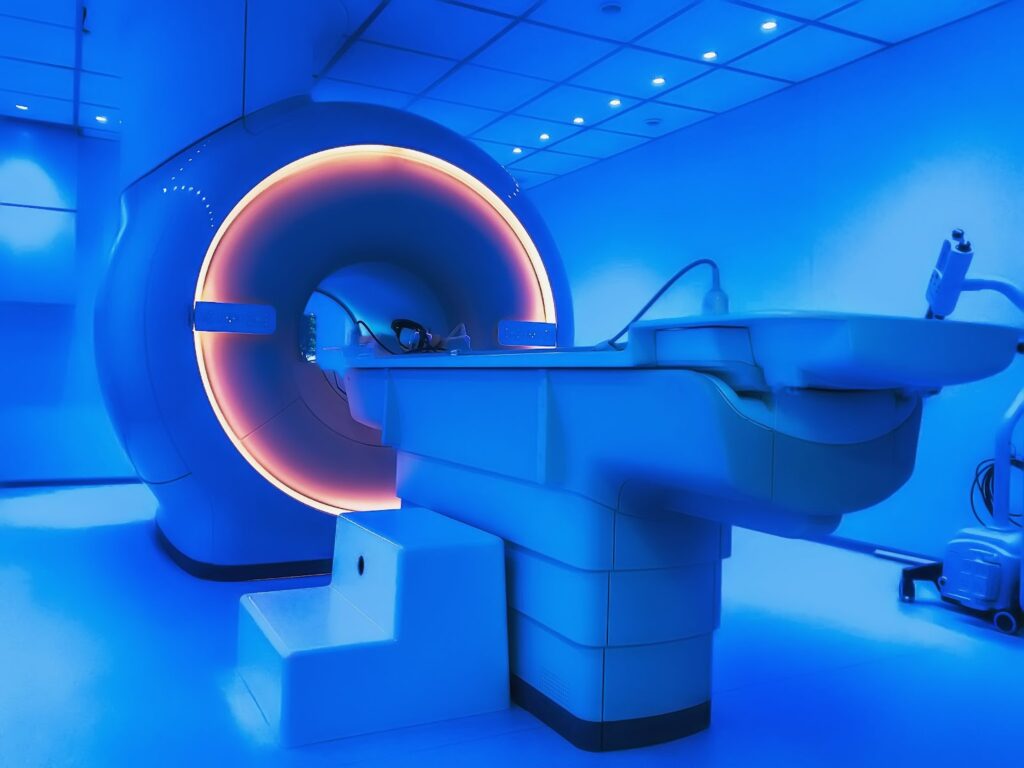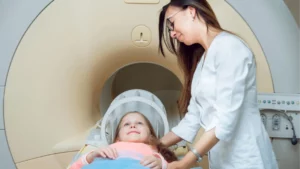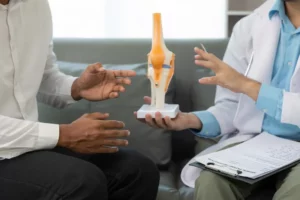In our never-ending quest for comprehensive healthcare, advanced diagnostic tools like Magnetic Resonance Imaging (MRI) play a critical role.
These cutting-edge imaging techniques allow medical professionals to delve deep into the human body’s intricate systems and pinpoint issues that might be causing discomfort or concern.
One such instance is nerve damage – a complex, tricky condition to diagnose and treat. Let’s delve into the realm of nerve damage and discover the role MRI plays in its detection.
Can MRI Effectively Show Nerve Damage?
The simple answer is yes, but there’s more depth to this question. MRI is a sophisticated tool that ideally captures detailed images of our body’s internal structures – including nerves.
But while it’s capable of visualizing nerves, diagnosing nerve damage isn’t always that straightforward. Being able to see the nerve doesn’t automatically equate to diagnosing damage.
The skills of the radiologist and the specific type of nerve damage present play influential roles in the accuracy of the diagnosis.

Understanding Nerve Damage
Nerve damage, or neuropathy, is a broad term describing a problem with the nerves. It can occur due to a wide array of causes:
- Trauma: Severe injuries can cause direct damage to the nerves.
- Disease: Conditions such as diabetes or autoimmune diseases can cause nerve damage.
- Compression: Pressure on the nerves from repetitive motions or staying in one position for too long can lead to damage.
Let’s delve into different types of nerve damage:
- Peripheral Neuropathy: This is the most common type of nerve damage affecting the peripheral nervous system. Symptoms often start in the longest nerves, which are the ones that reach your toes.
- Central Neuropathy: This refers to damage in the central nervous system, which includes the brain and spinal cord.
- Sensory Neuropathy: This type of nerve damage affects the sensory nerves. It can cause issues like numbness or pain in your hands and feet.
- Motor Neuropathy: This affects the nerves responsible for movement. Those suffering from this type may experience muscle weakness or paralysis.
Understanding the different forms and causes of nerve damage helps underline the importance of diagnostic tools like MRI.
How MRI Works
Magnetic Resonance Imaging (MRI) is a non-invasive procedure that uses magnetic fields and radio waves to create detailed images of organs and structures in your body.
Basically, it emits a radio frequency pulse that disturbs the natural alignment of hydrogen atoms in the body.
When the pulse stops, these atoms realign, sending out signals that are picked up by the machine. The resulting images offer a peek into the body’s intricate structures.
Detecting Nerve Damage Through MRI
In scanning for nerve damage, an MRI provides high-resolution images that allow doctors to see details of the nervous system structures. This can include neuronal shrinkage or changes in surrounding tissues that may suggest nerve damage.
Nerve tissues are usually examined using a process called Magnetic Resonance Neurography (MRN). This technique provides vivid images of nerves, which can also demonstrate signs of inflammation or abnormalities that may indicate nerve damage.
However, as efficient as it is, the interpretation of nerve damage through MRI largely depends on the radiologist’s expertise. Identifying nerve damage isn’t always black or white – it sometimes falls into a gray area that requires the discerning eye of a skilled specialist.

Advantages of MRI in Detecting Nerve Damage
MRI has multiple advantages that make it a preferred tool for detecting nerve damage:
- Detail: Unlike other imaging techniques, MRI can visualize soft tissues – including nerves – with impressive clarity.
- Non-invasive: MRI is completely non-invasive, meaning it doesn’t require any incisions. This attribute, coupled with its ability to provide comprehensive images, makes it a suitable option for many patients.
- No radiation: Unlike CT scans and traditional X-rays, MRI involves no ionizing radiation, reducing potential risks associated with such exposure.
- Versatility: An MRI can also pick up other conditions that may cause similar symptoms to nerve damage, bolstering its ability to provide accurate diagnoses.
Alternatives to MRI for Detecting Nerve Damage
While MRI is pivotal in revealing nerve damage, it’s not the only player on the field. Certain other diagnostic approaches are also used to detect nerve abnormalities. Their usage may depend on the specific circumstances and judgment of the healthcare provider. Here’s a look at some prominent alternatives:
- Nerve Conduction Study (NCS): This test measures the speed and strength of signals traveling between two points on a nerve. By assessing the nerve’s function, NCS can help pinpoint areas of damage.
- Electromyography (EMG): This diagnostic procedure involves inserting a fine needle electrode into a muscle to record the electrical activity when the muscle is at rest and during contraction. It’s often done alongside an NCS to diagnose disorders that affect nerves and muscles.
- CT scan: A CT scan, or computed tomography scan, uses X-rays to produce detailed images of the body. It’s often used when MRI isn’t suitable for the patient or when MRI results aren’t conclusive.
The Role of One Step Diagnostic in Nerve Damage Diagnosis and Management
Through comprehensive and technologically advanced diagnostic services, One Step Diagnostic tirelessly supports patients and healthcare providers in their healthcare journey.
Its facilities, spread across several locations, including Medical Center, Kirkwood, Red Oak, Katy, Sugar Land, Fallbrook, Bay Colony, and Woodlands, are a testament to its dedication to accessible and quality healthcare.
From MRIs to Nerve Conduction Studies and beyond, One Step Diagnostic provides a spectrum of services for accurate and prompt diagnosis and subsequent management of conditions like nerve damage.
By continually blending passion, skill, and advanced technology, One Step Diagnostic remains a beacon of hope for those seeking answers in their health journey.

Creating a Clearer Picture of Nerve Damage
Understanding the capabilities of diagnostic tools like MRI has a profound effect on managing complex conditions like nerve damage.
The resulting clairvoyance these tools provide helps doctors deliver the most effective treatment plans and patients embrace these directions with confidence, walking hand in hand with innovation towards better health outcomes.




